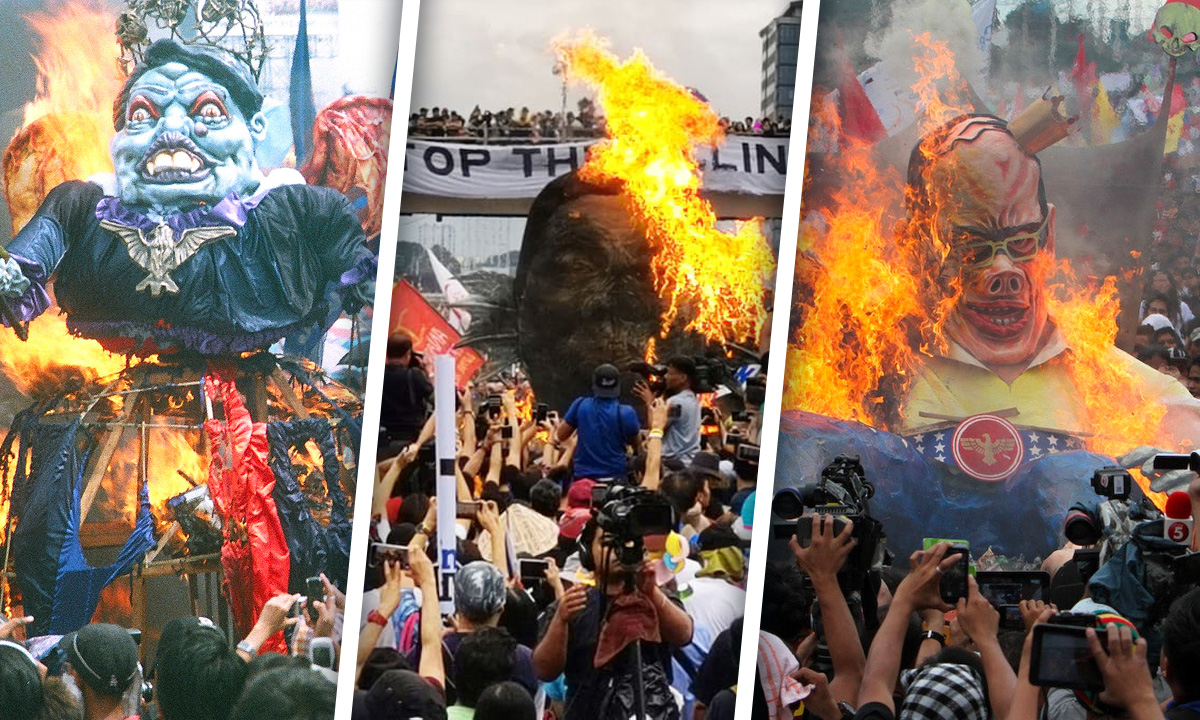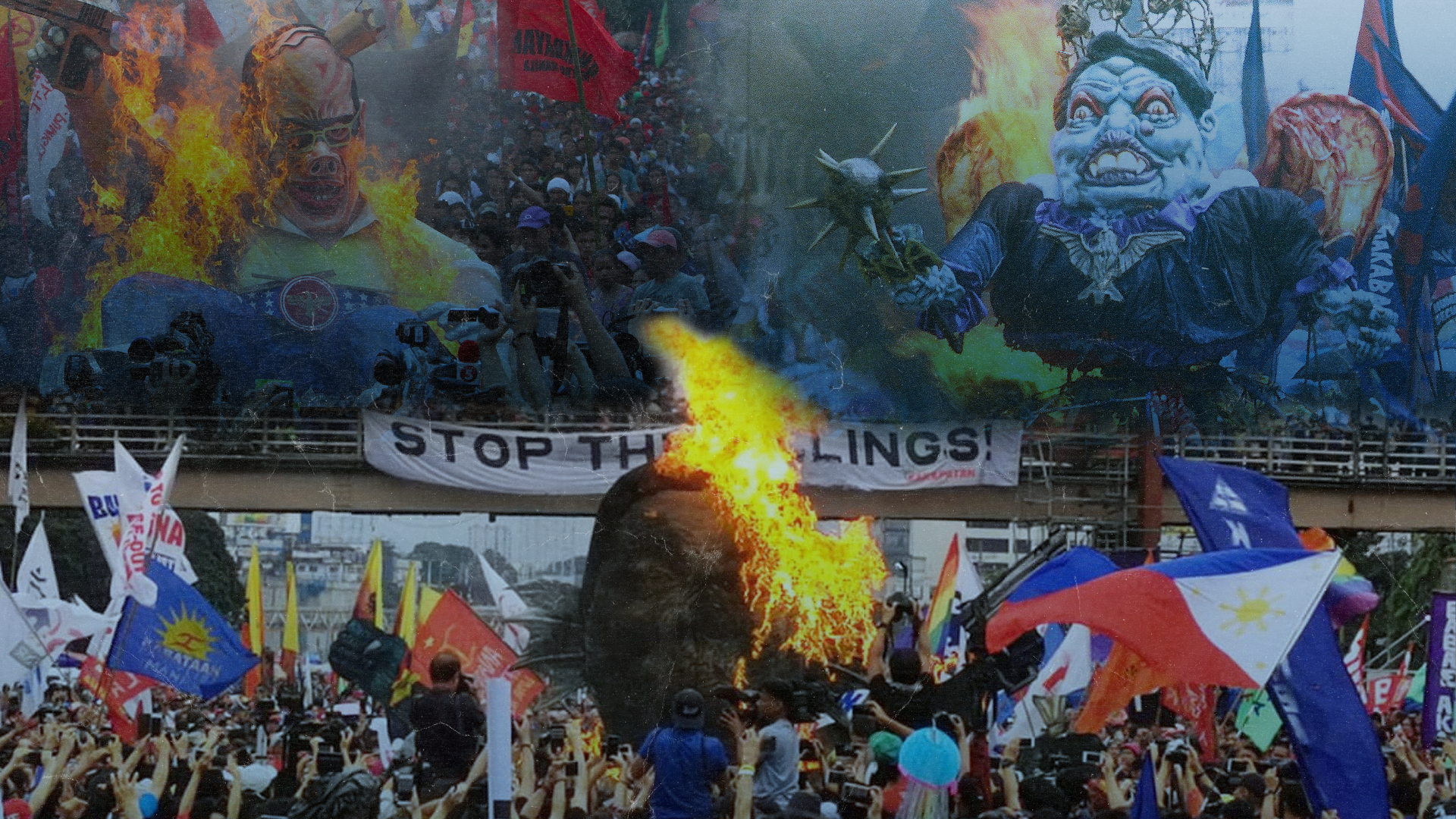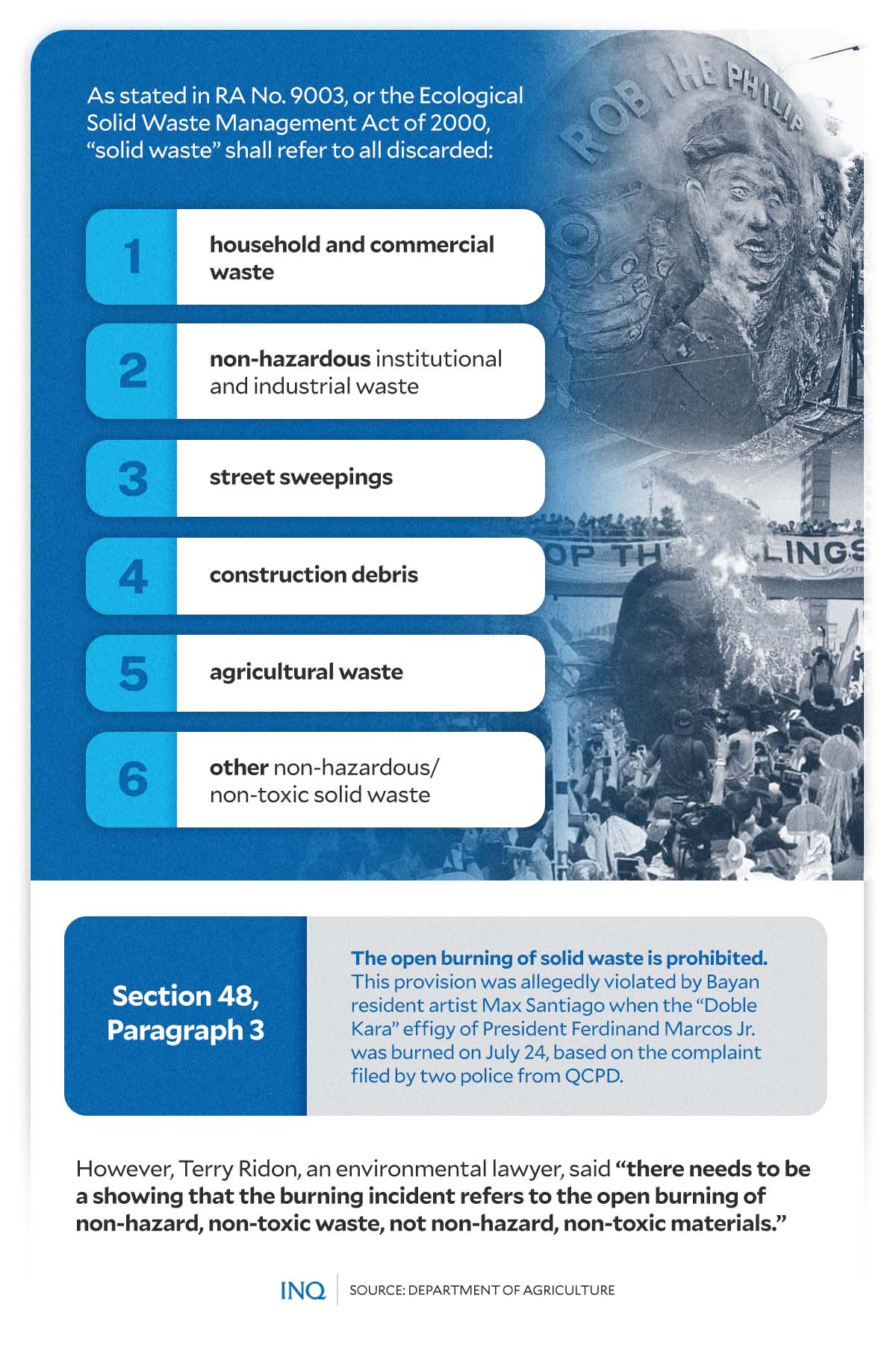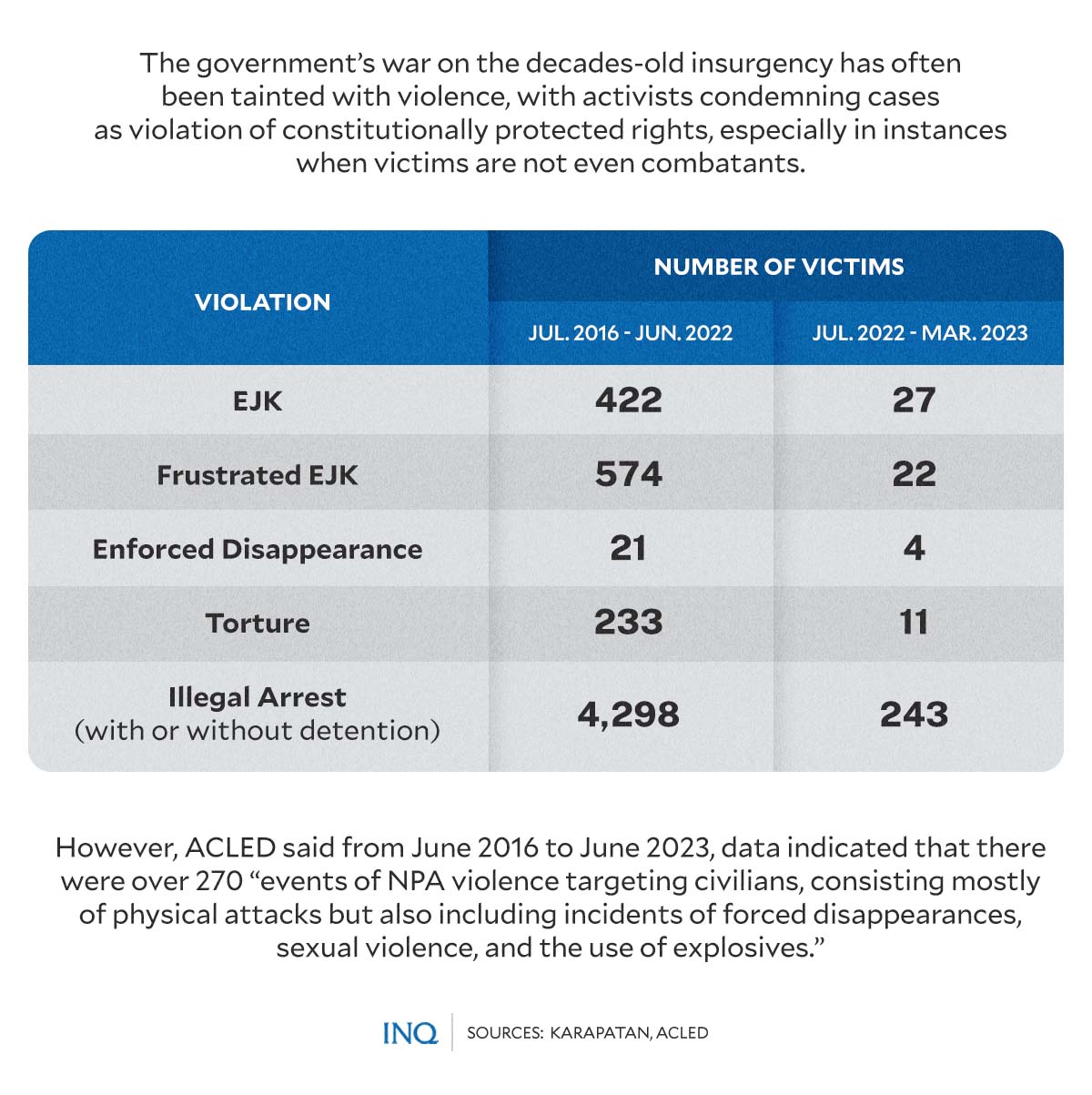Effigies as pollutants? Police told to study law they used to sue activists
MANILA, Philippines—Effigies have been regular fixtures in protest rallies, including those that activists hold when the highest official of the land, the President, delivers the State of the Nation Address (Sona).
According to Raymond Palatino, secretary general of Bagong Alyansang Makabayan (Bayan), using effigies during demonstrations is constitutionally protected and part of the right to dissent.
Dr. Maria Ela Atienza, professor of political science at the University of the Philippines Diliman, said the burning of effigies has long been part of protests all over the world, and that in the Philippines, “there is freedom to protest based on our laws.”
“Government officials can be criticized and held accountable,” she told INQUIRER.net.
Looking back, former presidents, like Gloria Magacapagal-Arroyo, Benigno Aquino III, and Rodrigo Duterte, had seen how effigies bearing their likeness were set on fire by protesters criticizing government neglect, especially of the poor.

COMPOSITE IMAGE: Protesters burn effigies of Gloria Macapagal-Arroyo, Rodrigo Duterte, and Benigno Aquino III during rallies timed for Sona deliveries of the then presidents in 2007, 2005 and 2019. WIKIMEDIA COMMONS, KARAPATAN, INQUIRER FILE PHOTOS/RAFFY LERMA
But this year, the burning of the “Doble Kara” effigy of President Ferdinand Marcos Jr. was met by a complaint, with the police saying that it was in violation of two environmental laws.
According to Bayan, its resident artist, Max Santiago, received a subpoena asking him to appear before the Office of the Prosecutor of Quezon City to answer a complaint filed by two members of the Quezon City Police District.
Palatino, however, said the law is being “misused.”
“Authorities are misusing the law to criminalize freedom of expression. We will challenge this harassment suit since it could set a dangerous precedent,” he said on Wednesday (Aug. 23).
Out of context
As alleged by the complainants, the burning of the effigy last July 24 was in violation of Republic Act (RA) No. 9003, or the Ecological Solid Waste Management Act of 2000, and RA No. 8749, or the Philippine Clean Air Act of 1999.
READ: QCPD goes after artist behind Marcos effigy burned at Sona
RA No. 9003 prohibits the open space burning of solid waste “defined as all discarded household, commercial waste, non-hazardous institutional and industrial waste, street sweepings, construction debris, agricultural waste, and other non-hazardous/non-toxic waste.”
But Terry Ridon, a public policy lawyer, said what the law prohibits is the “open burning of solid waste,” and that in any circumstance, “works of art such as effigies cannot be considered solid waste.”
“There needs to be a showing that the burning incident refers to the open burning of non-hazard, non-toxic waste, not non-hazard, non-toxic materials,” he told INQUIRER.net.
On the alleged violation of RA No. 8749, Ridon pointed out that “what is expressly prohibited by the law is the burning of waste through incinerators, and not this type of burning, which is well within the right to free speech and expression.”
According to Section 20 of RA No. 8749, incineration is defined as the burning of municipal, biomedical and hazardous waste, which, when processed, emits poisonous and toxic fumes.
Based on the law, however, “the prohibition shall not apply to traditional small-scale method[s] of community/neighborhood sanitation ‘siga,’ traditional, agricultural, cultural, health, and food preparation and crematoria.”
Protest art
As stated in the complaint, the burning of the effigy was a “deliberate disrespect” of Marcos, who was elected to the presidency last year, May 9. This year, Marcos delivered his second Sona.
Lisa Ito, a progressive artist, explained in the book “Towards a People’s Culture” that “the effigy is constructed not only as a mockery of the person represented, but also of the larger system that his or her likeness embodies.”
Published in 2013 by BAK, the book was a compilation of the views of artists and students on the role of art and culture in political struggles. Ito wrote the part “Protest Puppetry: An Update on the Aesthetics and Production of Effigy-Making, 2005-2012.”
Ito said the effigy is “conceived not merely as an ornament to the protest action, but as a vital part of imaging dissent and projecting this image to the larger populace whom these movements aim to reach.”
As stated by Santiago in a column for Bulatlat on June 25, “the creation (and destruction) of an effigy has always been a collective effort,” and this year’s effigy was no exemption.
He said the effigy for Marcos’ second Sona represented the duality of the legendary Tallano gold coin, with one side portraying Marcos and the promises he made, and the other, representing a “more truthful image.”
Ito pointed out that “effigies have evolved considerably as a form of popular protest art in the Philippines” used by progressive people’s movements “not only to entertain, but also to arouse, mobilize, and capture the sentiments of the people.”
‘Dangerous precedent’
Palatino said “we will challenge this harassment suit since it could set a dangerous precedent,” stressing that “we will not allow the police to dictate what forms of expression can be done in exercising our right to dissent.”
For Atienza, the complaint filed by police against Santiago, who is an activist, is part of the harassment against opposition and other forces in the country who criticize the government and/or the president.”
According to data from the human rights group Karapatan, from July 2016 to June 2022, 422 fell victims to extrajudicial killing (EJK), 574 to frustrated EJK, 21 to enforced disappearance, 233 to torture, and 4,298 to illegal arrest, with or without detention.
These, it said, continued under Marcos Jr, stressing that from July 2022 to March 2023, there were 27 victims of EJK, 22 victims of frustrated EJK, 4 victims of enforced disappearance, 11 victims of torture, and 243 victims of illegal arrest.
Atienza pointed out that police are “misusing and weaponizing” laws to “harass protesters and try to stifle dissent. As of June 2023, Karapatan said there are 778 political prisoners, with 49 of them arrested and detained since July 2022.
“They want to change the narrative to overshadow legitimate concerns of activists on issues neglected by the President and other government officials,” she said on Thursday (Aug. 24).


